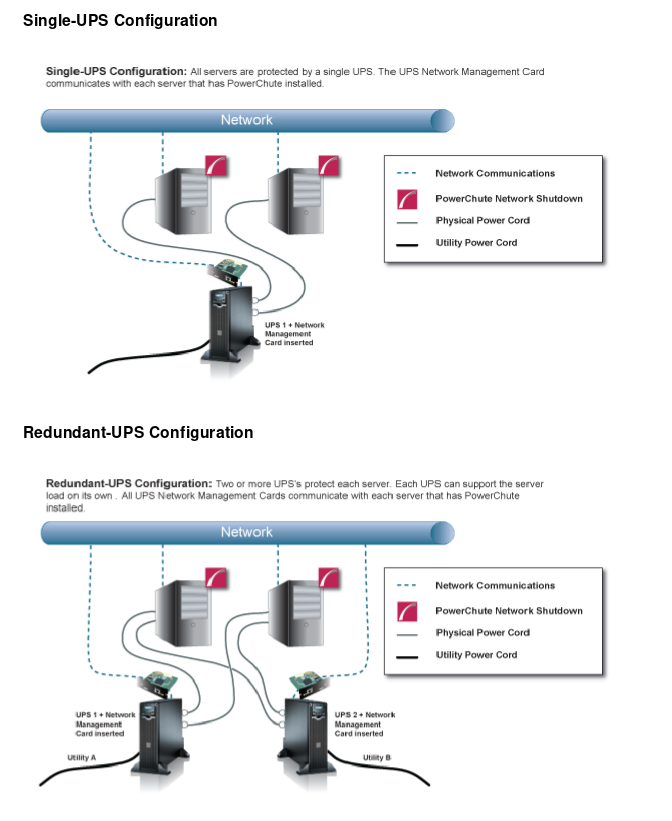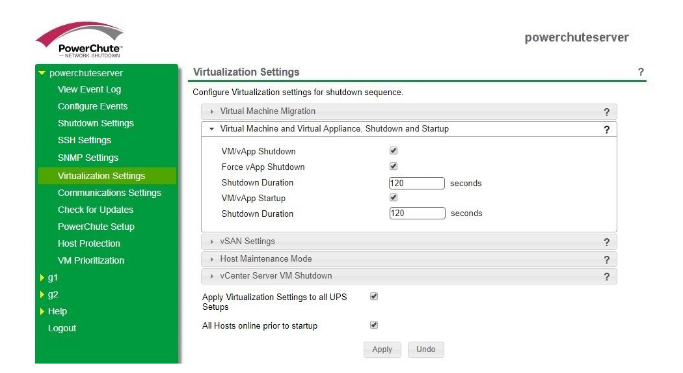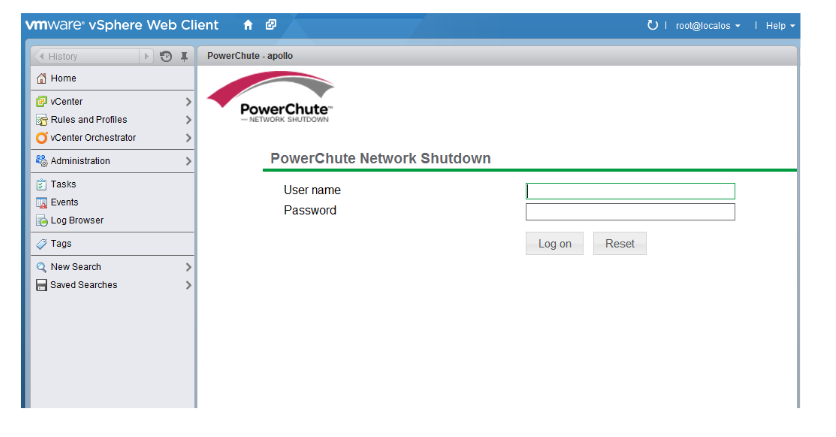Recently during checking news on VMware Solutions Exchange page, I found that useful info is available there PowerChute Network Shutdown v4.3 for VMware. This software supports the graceful shutdown in a vSAN environment with support for Standard and Stretched clusters. PowerChute will issue a Maintenance Mode command for vSAN cluster hosts using the “No Action” or “Ensure Accessibility” mode, depending on the current configuration and cluster state.
In the case of a UPS critical event, the software performs a graceful, unattended system shutdown before the UPS battery is exhausted. The number of protected systems is limited only by the capacity of the UPS but there are few configurations available such as:
- Single-UPS Configuration
- Redundant-UPS Configuration
- Parallel-UPS Configuration
- Advanced UPS Configuration

PowerChute Network Shutdown can be deployed as a virtual appliance or installed on a Windows physical machine to remotely monitor HA clusters protected by multiple
Shutdown Sequence is as follows:
- PowerChute reports that the UPS is on battery.
- Shutdown delay for the On Battery event elapses. PowerChute starts a maintenance mode task on each Host. At the same time it sends a command to turn off the UPS or Outlet Group.
- PowerChute starts VM shutdown followed by vApp shutdown.
- VM/vApp shutdown durations elapse and PowerChute gracefully shutsdown the vCenter Server VM.
- vCenter VM shutdown duration elapses. PowerChute starts executing the shutdown command file.
- Shutdown command file duration elapses.
- PowerChute shutsdown the VMware hosts using the order on the VMware Host Protection page.
- UPS waits for greater of Low Battery Duration/Maximum Required Delay(Non-Outlet AwareUPS’s) or the Outlet Group Power Off Delay.
- UPS turns off after the user configurable Shutdown Delay time has elapsed or the Outlet Group turns off after the power off Delay elapses.
Startup sequences:
- Input power is restored and the UPS turns on.
- The VMware hosts are powered on.
- PowerChute waits until the remaining hosts are back online before taking them out of Maintenance mode.
- PowerChute starts the vCenter Server VM and waits until it is accessible.
- PowerChute starts the vApp and waits until the vApp start command has completed (if there are multiple vApps they will be started in reverse order to how they were shutdown).
- PowerChute starts the VMs on each host in reverse order to how the hosts were shutdown. PowerChute uses the VM startup delay as the interval between starting VMs on each host.
For more scenarios (e.g. multiple geographic sites) please follow a great resource available here.
Integration is pretty simple and is based on:
- Deploying the PowerChute Virtual Appliance (CentOS, updating OS is recommended, more info in User Guide).
- Creating an account with Administrator Role on vCenter.
- Run PowerChute wizard to integrate with vCenter and clusters/hosts.

For more information please follow the User Guide PowerChute Network Shutdown v4.3 VMware. Please notice that APC PowerChute is a third-party product and is not officially supported by VMware. They recommend to consult a software vendor for further updates and support.
The latest version provides a plugin option for the vSphere Web Client.

We have integrated PowerChute with vSphere 6.5 + vSAN in our environment quickly without any problems. Validation tests are coming...
Useful links:
Installing the APC Powerchute Network Shutdown software on VMware ESXi hosts - VMware KB
Installation Guide PowerChute Network Shutdown v4.3
